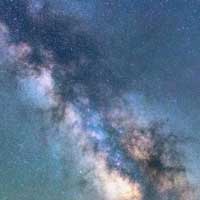 Astronomers have determined our galaxy is surrounded by a clumpy halo of hot gases that is continually being supplied with material ejected by birthing or dying stars. This heated halo, called the circumgalactic medium, was the incubator for the Milky Way's formation some 10 billion years ago and could be where basic matter unaccounted for since the birth of the universe may reside.
Astronomers have determined our galaxy is surrounded by a clumpy halo of hot gases that is continually being supplied with material ejected by birthing or dying stars. This heated halo, called the circumgalactic medium, was the incubator for the Milky Way's formation some 10 billion years ago and could be where basic matter unaccounted for since the birth of the universe may reside.
Oct 19th, 2020
Read more
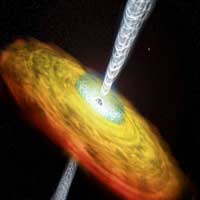 Some supermassive black holes launch powerful beams of material, or jets, away from them, while others do not. Astronomers may now have identified why.
Some supermassive black holes launch powerful beams of material, or jets, away from them, while others do not. Astronomers may now have identified why.
Oct 19th, 2020
Read more
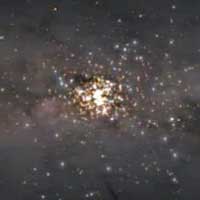 Star clusters have been part of the Imaginarium of human civilization for millennia. The brightest star clusters to Earth, like the Pleiades, are readily visible to the naked eye. Astronomers have now revealed the existence of massive stellar halos, termed coronae, surrounding local star clusters.
Star clusters have been part of the Imaginarium of human civilization for millennia. The brightest star clusters to Earth, like the Pleiades, are readily visible to the naked eye. Astronomers have now revealed the existence of massive stellar halos, termed coronae, surrounding local star clusters.
Oct 15th, 2020
Read more
 Scientists propose a novel method for finding dark matter, the cosmos's mystery material that has eluded detection for decades. The proposed experiment, in which a billion millimeter-sized pendulums would act as dark matter sensors, would be the first to hunt for dark matter solely through its gravitational interaction with visible matter.
Scientists propose a novel method for finding dark matter, the cosmos's mystery material that has eluded detection for decades. The proposed experiment, in which a billion millimeter-sized pendulums would act as dark matter sensors, would be the first to hunt for dark matter solely through its gravitational interaction with visible matter.
Oct 14th, 2020
Read more
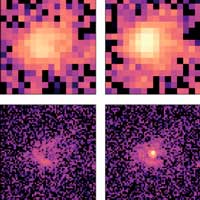 Two new studies find that the Webb will be able to reveal galaxies currently masked by powerful lights called quasars.
Two new studies find that the Webb will be able to reveal galaxies currently masked by powerful lights called quasars.
Oct 14th, 2020
Read more
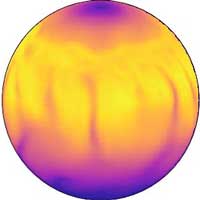 New research is helping to explain one of the big questions that has perplexed astrophysicists for the past 30 years - what causes the changing brightness of distant stars called magnetars.
New research is helping to explain one of the big questions that has perplexed astrophysicists for the past 30 years - what causes the changing brightness of distant stars called magnetars.
Oct 13th, 2020
Read more
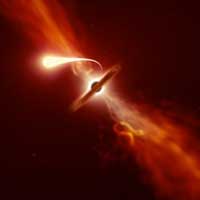 Using telescopes from around the world, astronomers have spotted a rare blast of light from a star being ripped apart by a supermassive black hole. The phenomenon, known as a tidal disruption event, is the closest such flare recorded to date at just over 215 million light-years from Earth, and has been studied in unprecedented detail.
Using telescopes from around the world, astronomers have spotted a rare blast of light from a star being ripped apart by a supermassive black hole. The phenomenon, known as a tidal disruption event, is the closest such flare recorded to date at just over 215 million light-years from Earth, and has been studied in unprecedented detail.
Oct 12th, 2020
Read more
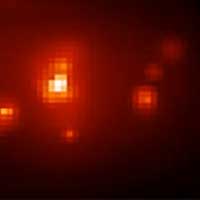 New, most complete start-to-finish view of neutron star merger rewrites the way scientists understand these events.
New, most complete start-to-finish view of neutron star merger rewrites the way scientists understand these events.
Oct 12th, 2020
Read more
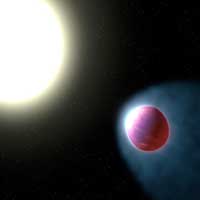 An international team of researchers studied the atmosphere of the ultra-hot exoplanet WASP-121b. In it, they found a number of gaseous metals. The results are a next step in the search for potentially habitable worlds.
An international team of researchers studied the atmosphere of the ultra-hot exoplanet WASP-121b. In it, they found a number of gaseous metals. The results are a next step in the search for potentially habitable worlds.
Oct 8th, 2020
Read more
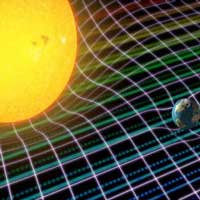 An international team of researchers has measured, with unprecedented accuracy, the gravitational redshift of the Sun, a change in frequency of the lines in the solar spectrum which is produced when the light escapes from the gravitational field of the Sun on its way to Earth.
An international team of researchers has measured, with unprecedented accuracy, the gravitational redshift of the Sun, a change in frequency of the lines in the solar spectrum which is produced when the light escapes from the gravitational field of the Sun on its way to Earth.
Oct 8th, 2020
Read more
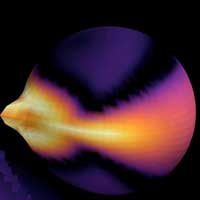 A team of gravitational-wave scientists reveals that when two black holes collide and merge, the remnant black hole 'chirps' not once, but multiple times, emitting gravitational waves - intense ripples in the fabric space and time - that inform us about its shape.
A team of gravitational-wave scientists reveals that when two black holes collide and merge, the remnant black hole 'chirps' not once, but multiple times, emitting gravitational waves - intense ripples in the fabric space and time - that inform us about its shape.
Oct 8th, 2020
Read more
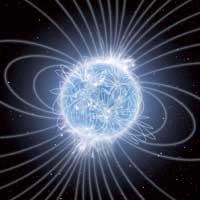 Astronomers have made observations of a new magnetar, called Swift J1818.0-1607, which challenges current knowledge about two types of extreme stars, known as magnetars and pulsars.
Astronomers have made observations of a new magnetar, called Swift J1818.0-1607, which challenges current knowledge about two types of extreme stars, known as magnetars and pulsars.
Oct 8th, 2020
Read more
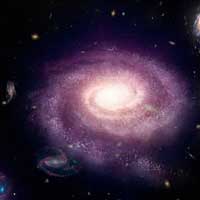 Astronomers have developed a new way to study star formation in galaxies from the dawn of time to today.
Astronomers have developed a new way to study star formation in galaxies from the dawn of time to today.
Oct 7th, 2020
Read more
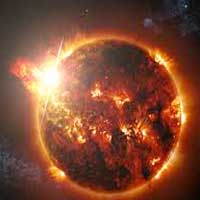 New research will help astrobiologists understand how much radiation planets experience during super flares and whether life could exist on worlds beyond our solar system.
New research will help astrobiologists understand how much radiation planets experience during super flares and whether life could exist on worlds beyond our solar system.
Oct 7th, 2020
Read more
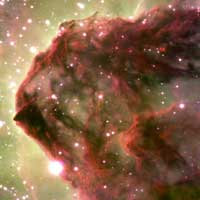 NASA's James Webb Space Telescope is still more than a year from launching, but the Gemini South telescope in Chile has provided astronomers a glimpse of what the orbiting observatory should deliver.
NASA's James Webb Space Telescope is still more than a year from launching, but the Gemini South telescope in Chile has provided astronomers a glimpse of what the orbiting observatory should deliver.
Oct 5th, 2020
Read more
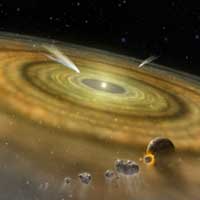 Astronomers reveal first direct image of Beta Pictoris c using the GRAVITY instrument.
Astronomers reveal first direct image of Beta Pictoris c using the GRAVITY instrument.
Oct 5th, 2020
Read more
 Earth is not necessarily the best planet in the universe. Researchers have identified two dozen planets outside our solar system that may have conditions more suitable for life than our own. Some of these orbit stars that may be better than even our sun.
Earth is not necessarily the best planet in the universe. Researchers have identified two dozen planets outside our solar system that may have conditions more suitable for life than our own. Some of these orbit stars that may be better than even our sun.
Oct 5th, 2020
Read more
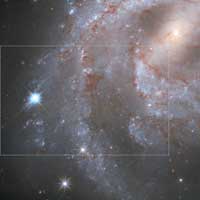 Now you see it, now you don't. Though stars explode at the rate of one per second in the vast universe, it's rare to get a time-lapse movie of one fading into obscurity. This disappearing act, in a galaxy 70 million light-years away, was captured by the Hubble Space Telescope as part of a program to measure the universe's expansion rate.
Now you see it, now you don't. Though stars explode at the rate of one per second in the vast universe, it's rare to get a time-lapse movie of one fading into obscurity. This disappearing act, in a galaxy 70 million light-years away, was captured by the Hubble Space Telescope as part of a program to measure the universe's expansion rate.
Oct 1st, 2020
Read more
 Astronomers have determined our galaxy is surrounded by a clumpy halo of hot gases that is continually being supplied with material ejected by birthing or dying stars. This heated halo, called the circumgalactic medium, was the incubator for the Milky Way's formation some 10 billion years ago and could be where basic matter unaccounted for since the birth of the universe may reside.
Astronomers have determined our galaxy is surrounded by a clumpy halo of hot gases that is continually being supplied with material ejected by birthing or dying stars. This heated halo, called the circumgalactic medium, was the incubator for the Milky Way's formation some 10 billion years ago and could be where basic matter unaccounted for since the birth of the universe may reside.
 Subscribe to our Space Exploration News feed
Subscribe to our Space Exploration News feed















